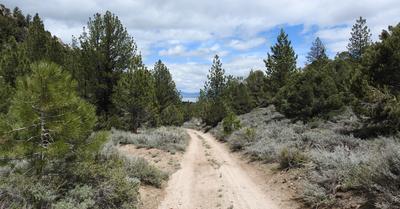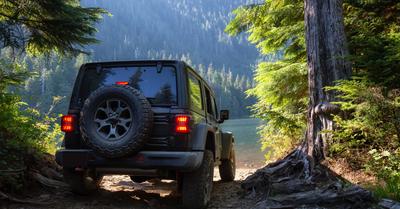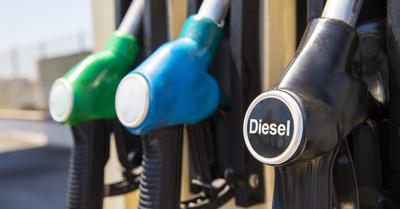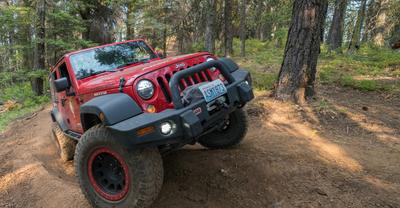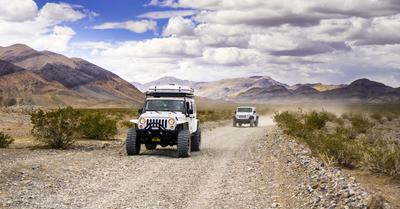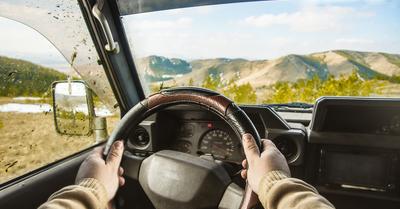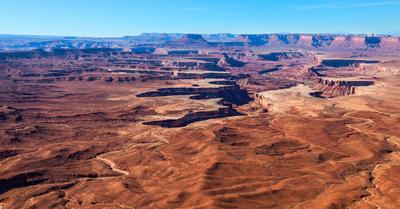Off-roading is fun, especially in the desert—but is it harmful, and how does it affect the local environment?
Off-roading causes damage to the desert in the form of noise pollution, erosion, liquid chemical pollution, brush fires, and particulate matter emissions. All of this damage can be mitigated or eliminated with proper care.
In this article, we’ll cover the main sources of damage to the desert caused by off-roading. We’ll explain each kind of pollution and its effects, along with five ways to easily reduce your impact on the deserts we all enjoy.
We sourced the information used in this article from off-road guides and environmental reports on desert pollution.
This article may contain affiliate links where we earn a commission from qualifying purchases.
Noise Pollution
Believe it or not, sound also pollutes the environment. Sound travels far in the desert, and many of the animals that live there are attuned to the smallest noises to detect predators or prey.
Loud off-road vehicles can mess up migration patterns and affect feeding miles away from their actual location, and they drive off many of the smaller animals that large creatures depend on for food (which is already scarce in the desert).
Trail Damage
Operating off-road vehicles causes erosion and trail damage. On a small scale, the ecological impacts are acceptable. This is why off-road trails exist—to keep people in one area and preserve the rest of the environment.
But hundreds of people mindlessly tearing through the desert every year causes enormous damage and kicks up dust that otherwise wouldn’t be lofted for decades. This can cause giant dust drifts that damage property and harm the local ecosystem.
This kind of damage is easy to prevent if you just stay on the trail.
Chemical Leaks
The desert is particularly susceptible to chemical damage. This comes in the form of pollution from spilled fuel, oil leaks, particulates, and other liquid leaks.
Particulates are of particularly great concern, as they settle in the hot and dry environment with little chance of washing away. They then get kicked up by the wind and distributed, almost like deadly dust.
Off-road vehicles are a contributor to desert pollution, which affects the local air, land, and water. This is especially true for 2-stroke engines (which burn oil with fuel) and other vehicles that use less-refined off-road fuel.
Oil Pollution
Oil leaks are a common source of desert pollution, though most oil-related desert damage comes from illegal dumping.
Toxic Fluid Leaks
Another source of pollution that affects the desert is any fluid that leaks from an off-road vehicle. Coolant, for example, is surprisingly toxic and often dumped when cars overheat. Brake fluid is another example, and transmission fluid often pollutes desert roadways.
One vehicle with a slow fluid leak isn’t much concern. But in popular areas, thousands of off-road vehicles (many with damage and poor maintenance) leak gallons of fluid onto desert roads every year.
This is a problem because it doesn’t rain much in the desert. The ground is essentially hydrophobic and doesn’t absorb liquid. So when it rains, flash floods wash all the surface contamination into surrounding lakes and rivers.
Trash
People have been dumping garbage in the desert for generations—long before anti-pollution laws—and many people still see the desert as an inhospitable wasteland that’s perfect for getting rid of used oil and trash.
Off-Road Vehicles and Desert Brush Fires
Brush fires are another negative effect of off-roading in the desert. These fires further degrade air quality in desert climates. But paradoxically, many desert brush fires are started by the very equipment designed to improve air quality.
Catalytic converters are a common cause of brush fires in the desert. These devices, which use heat to break down harmful emission chemicals into CO2 and water, get much hotter than the rest of the exhaust system.
When a catalytic converter-equipped vehicle parks over tall grass, the device (which is likely red hot after driving for a while) can be an immediate source of ignition. This usually burns the car, and often starts a large and difficult-to-control fire.
Backfiring from a vehicle can also cause brush fires, though it’s not clear how much this occurs. Hot dirt bike mufflers have been known to start fires as well.
How to Reduce the Effect of Off-Roading on the Desert
Off-roading is a fun and rewarding experience that doesn’t have to damage the deserts we love. There are several ways to prevent damage and lessen your impact on the environment, so future generations can also enjoy the desert as we did.
1. Keep your vehicle in good shape.
The first and most important thing to do is to keep your vehicle in good running condition. Make sure there aren’t any big leaks, top off your fluids, and keep your cooling system clean and efficient. This reduces the risk of overheating and leakage.
2. Watch where you park.
If the fire danger is serious (as it usually is in the desert), don’t park your vehicle on top of dry grass or brush, even if it looks green. This will immediately reduce the risk of starting a desert brushfire and can keep you rolling for longer. If you smoke, use the ashtray in your vehicle—don’t toss lit cigarettes out of the window.
3. Pick up your trash.
Here’s an easy one—make sure you leave with everything you came with. This reduces the most unsightly form of desert pollution and protects you and the environment from harmful microplastics.
4. If possible, stay on the trail at all times.
Off-roading trails are usually built with taxpayer money as a recreational tool for the public and as a way to protect the environment. If you go out in the desert, stay on the trail to isolate any ground damage your wheels cause.
5. Use better and cleaner fuels.
Air pollution is bad for everyone, especially in the desert. When given a chance, it’s better for the local ecosystem to use consumer-grade fuels and avoid dirty off-road fuels. Particulate matter (PM) emissions are the most damaging kind for the desert, and they’re way more potent in cheaper fuels.


